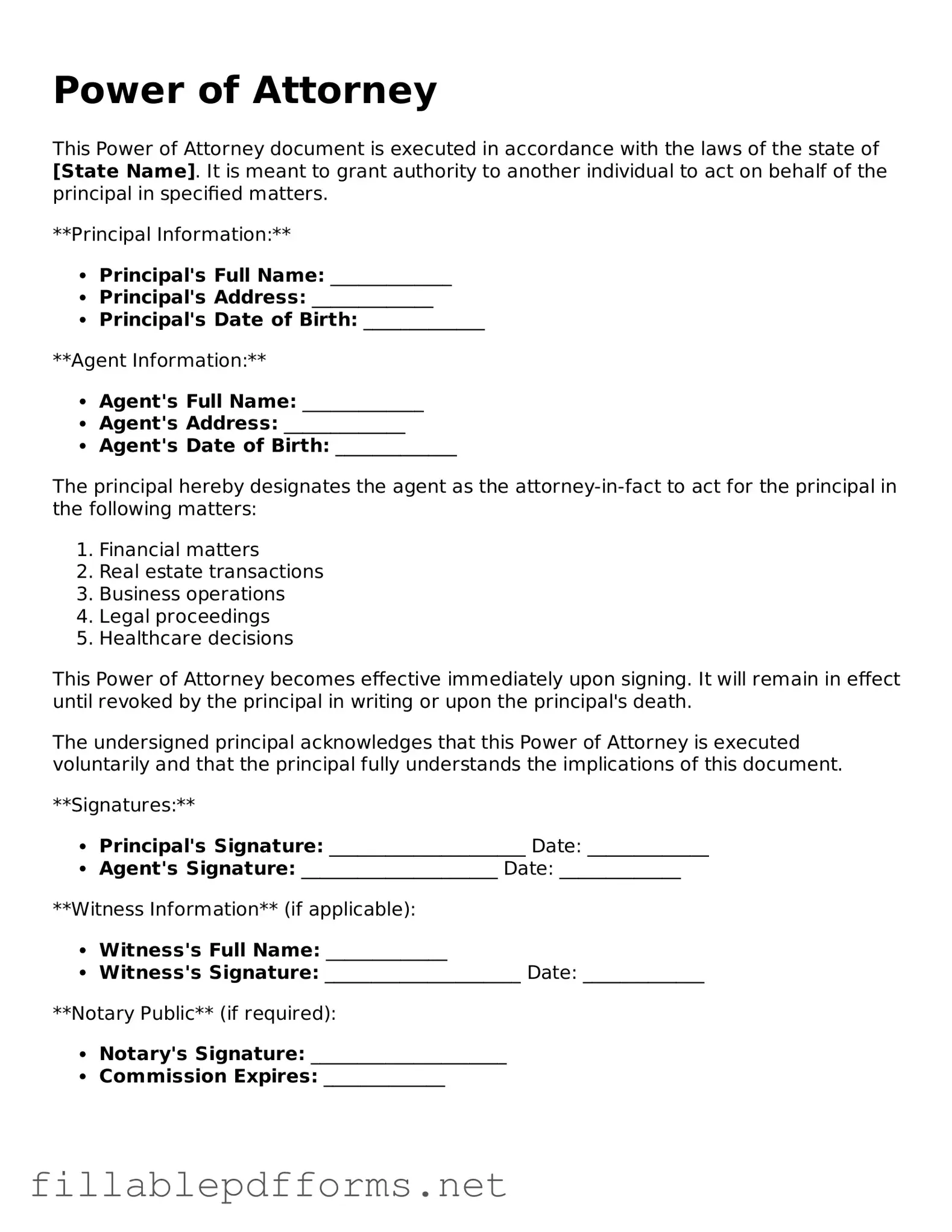The Power of Attorney form serves as a vital legal instrument that empowers an individual, known as the principal, to designate another person, referred to as the agent or attorney-in-fact, to act on their behalf in various matters. This document can encompass a broad range of responsibilities, including financial decisions, medical choices, and real estate transactions. It is essential to understand that the authority granted through this form can be limited to specific tasks or be comprehensive, depending on the principal's intentions. Furthermore, the Power of Attorney can be durable, remaining effective even if the principal becomes incapacitated, or it can be non-durable, ceasing to have effect under such circumstances. The execution of this form requires careful consideration, as it involves trust and the potential for significant implications regarding the principal's affairs. Individuals must also be aware of the legal requirements for creating a valid Power of Attorney, which may vary by state, including the necessity for signatures, witnesses, and notarization. Understanding these aspects is crucial for anyone considering this powerful legal tool, as it not only shapes personal autonomy but also ensures that one's wishes are respected in times of need.
